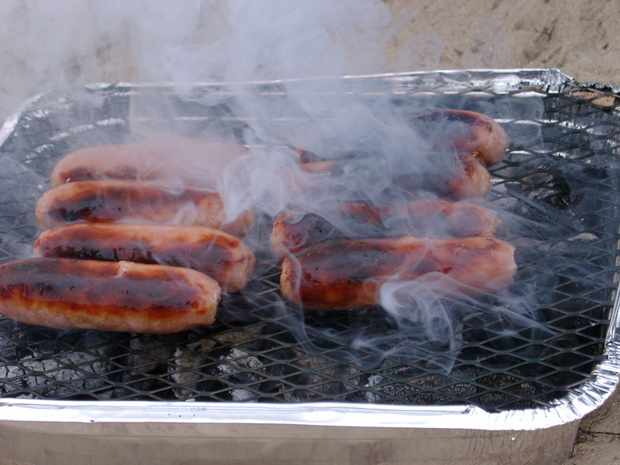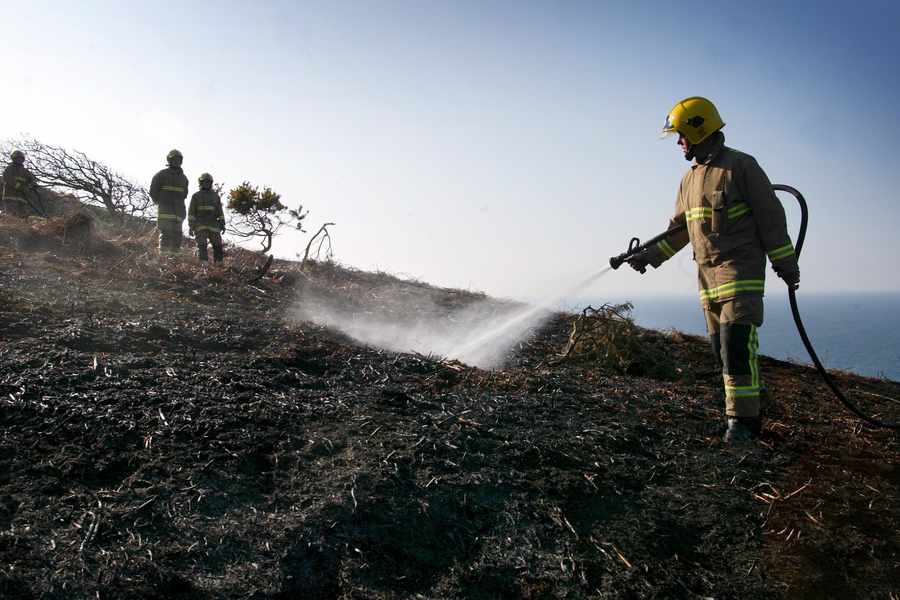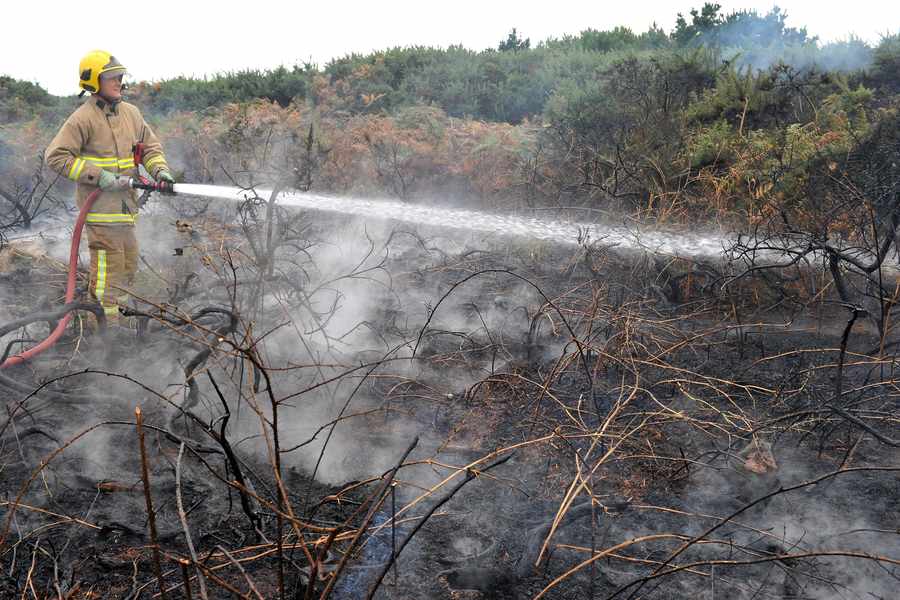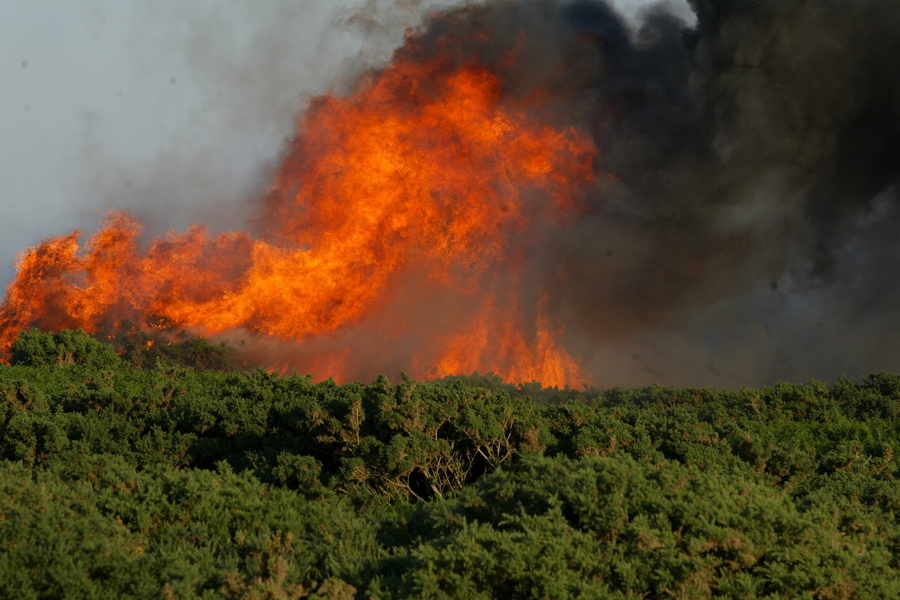Firefighters are urging Islanders to be careful when discarding barbecues and cigarettes as they could cause ‘massive’ countryside fires.

? Use approved lighter fuels on a barbecue, never petrol.
? Do not use too much charcoal and make sure you light it one hour before cooking.
? If you are the chef try not to drink too much.
? Extinguish the coal and leave for a period of one to three hours to make sure it is fully out.
? Never put a disposable barbecue in the dustbin before it has cooled down.
? Open fires should be downwind and at least ten metres away from tents etc.
? Clear dry vegetation around the fire to form a circle of earth.
Last Tuesday, police launched an investigation after a fire started in Sir Winston Churchill Park in St Brelade covering 50 square metres.
And Clive Russell, station manager at the Jersey Fire and Rescue Service, has warned that the Island is covered in highly-flammable furze which could trigger a large wildfire in the right conditions.
In 2011, an area the size of about 14 football pitches at L’Etacq was destroyed in a fire.
Two years earlier, 15 homes at L’Etacq had to be evacuated due to a furze fire when flames reportedly reached as high as 20 ft. A major fire also destroyed a large area of furze around Val de la Mare reservoir during the same year.
Naked flames are the most common way that such blazes start, although Mr Russell has said that it is not uncommon for the sun to magnify heat through discarded glass bottles to start fires.
Mr Russell said he hoped that the incident last week would not be the start of a spate of fires but that the public should remain vigilant to protect against the dangerous blazes.
He said: ‘Hopefully, there will not be a spate of fires but the cruel irony is that the longer you go without a furze fire, the more likely you are to get one.
‘The material begins to grow back and as it builds up, it gets more likely. That material around the Island has now built up. Our furze is really flammable and designed to burn quickly and there is a lot of it at the moment.
‘If all the elements, such as humidity and wind direction come together at the same time then we could potentially have a wildfire. If something like that happens then it could be massive and very damaging for the wildlife.’
He added: ‘The public do need to be vigilant, something that may seem fairly trivial could cause problems – it won’t just be a case of a bit of grass burning.
‘Naked flames are the biggest threat to that so people need to be careful with things like barbecues and cigarettes.’


ON a warm Sunday evening in May 2009 dozens of beachgoers watched in horror as the headland in St Brelade’s Bay burst into flames.
For some, it was a disturbing end to a sunny day on the sand.
For others, it may have brought back memories of the blaze which raged for almost a week during the hot summer of 2006 and destroyed a huge swathe of countryside above Bouley Bay.
But whereas the devastation of the fire in 2006 could still be seen by walkers on the north coast three years after it happened, firefighter Clive Russell knew that the St Brelade fire would be an easily containable countryside blaze that would probably be extinguished within an hour. Or, to give it its technical name, he knew that it was an F1 fire. Mr Russell, station manager at Jersey’s Fire and Rescue Service, had just returned from the Wildfire 2009 conference in the New Forest in Hampshire, where firefighters learned a more scientific approach to tackling countryside fires.

The message that came out of the meeting was clear: summers will get hotter and drier and winters will get milder and wetter. ‘It is the perfect storm as far as countryside fires are concerned,’ said Mr Russell.
‘Milder and wetter winters will enable more vegetation to grow and therefore increase the fuel bed, and hotter summers will dry it out. This creates ideal conditions for countryside fires.’
But there was also another message that firefighters took away from the meeting: that they should adopt a more scientific approach to tackling open-air fires.
During the conference Northumberland Fire and Rescue Service produced a ground-breaking new model to help firefighters to tackle such blazes. It was a model which firefighters in Jersey, as well as those in the UK, are now starting to adopt.
The model allows firefighters, for the first time, to use science to predict how severe a developing outside fire will become. It centres on three elements: slope, aspect and wind.
If a blaze is moving uphill it will race away, fuelled by convectional movements drying out the air and vegetation above it on the slope. If there is stone instead of vegetation above the seat of the fire, and it is therefore forced to move down a hill, the blaze will be less intense, as the hot dry air will drift harmlessly above it onto the rocks.
Similarly, if the fire is in aspect – in direct sunlight – then the air will be not only hotter, but also less humid and consequently more likely to ignite and spread.
Firefighters now recognise that if humidity falls below 70 per cent on a hot day, the countryside turns into a ticking time bomb.
And if the blaze has a strong wind behind it, pushing it further into the vegetation, the furze fire will spread rapidly. If a fire has only one of these on its side, it is classed as an easily containable F1 fire. If it has all three, it will become an F3 and quickly race away and become a wildfire – defined as a free-burning blaze with at least the potential to cover a surface area greater than a hectare with a flame height greater than three metres, with access to unrestricted fuel.
Or, to define it another way: Bouley Bay 2006.
FLY-TIPPING is an all-year-round problem in the Island. Thankfully the dumping of large or dangerous items and loads, such as fridges, builders’ waste and noxious chemicals, is a rare occurrence. The more common issue is caused by those who think nothing of throwing litter out of their car windows or who leave rubbish when they have a barbecue or picnic – even though they are just yards from a bin.
At this time of year, the problem tends to get worse as more people head out to enjoy the sun and the beautiful coastline and countryside.
Sadly, too many of those people act irresponsibly.
As reported today, the dirtying of the environment is not the only consequence of this selfish and thoughtless behaviour.
After a few years without a large furze fire which have seen the yellow-flowered bushes re-establish themselves in many parts of the west of the Island, there is now the potential for what Clive Russell, station manager at the Fire and Rescue Service, describes as a ‘massive’ blaze.
These fires, which can burn underground for days, are very hard to control and put lives and property in danger. They can be sparked by discarded cigarettes, barbecues and bottles which magnify the sun’s rays.
But that is not the only reason for disposing of litter properly.
If Jersey is to see its way through a period of unprecedented deficits, the Island must ensure that its economy remains strong. In the past few years the finance sector has contracted, meaning that the need to diversify the economy is even more pressing.
Visit Jersey, the body now responsible for promoting the Island around the world, is hoping to give a much needed boost to tourism, a vital limb of the economy. They are aiming for a target of one million visitors a year by 2030.
If that is going to happen, all Islanders must help to promote Jersey and make the Island a place where people want to come year after year.
The cleanliness of Jersey’s beaches, coastline and countryside is a real selling point for the Island – and one that everyone can protect.
Growing the economy is the best way to limit tax rises and cuts. Not littering really should be a no-brainer.







